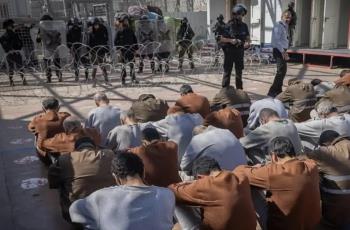alwaght-Research by the Bureau of Investigative Journalism, an independent news organisation based at City University, London, revealed in a report that remarks on inefficiency of America's drone attack are true.
Contrary to the claims of America Secretary of State, who asserted last year that American drone strikes only targeted “confirmed terrorist targets at the highest level, Bureau found that 96% of people killed in Americas drone attacks could not be identified as al Qaeda member.
As the number of US drone strikes in Pakistan hits 400, research by the Bureau of Investigative Journalism finds that fewer than 4% of the people killed have been identified by available records as named members of al Qaeda. This calls in to question US Secretary of State John Kerry’s claim last year that only “confirmed terrorist targets at the highest level” were fired at.
The Bureau’s Naming the Dead project has gathered the names and, where possible, the details of people killed by CIA drones in Pakistan since June 2004. On October 11 an attack brought the total number of drone strikes in Pakistan up to 400.
The names of the dead have been collected over a year of research in and outside Pakistan, using a multitude of sources. These include both Pakistani government records leaked to the Bureau, and hundreds of open source reports in English, Pashtun and Urdu.
Naming the Dead has also drawn on field investigations conducted by the Bureau’s researchers in Pakistan and other organisations, including Amnesty International, Reprieve and the Centre for Civilians in Conflict.
Only 704 of the 2,379 dead have been identified, and only 295 of these were reported to be members of some kind of armed group. Few corroborating details were available for those who were just described as militants. More than a third of them were not designated a rank, and almost 30% are not even linked to a specific group. Only 84 are identified as members of al Qaeda – less than 4% of the total number of people killed.
These findings “demonstrate the continuing complete lack of transparency surrounding US drone operations,” said Mustafa Qadri, Pakistan researcher for Amnesty International.
|
Pakistan drone strike |
|
|
Total killed |
2,379 |
|
Total identified as militants |
295 |
|
Total named as al Qaeda |
84 |
|
Total named |
704 |
When asked for a comment on the Bureau’s investigation, US National Security Council spokeswoman Caitlin Hayden said that strikes were only carried out when there was “near-certainty” that no civilians would be killed.
“The death of innocent civilians is something that the U.S. Government seeks to avoid if at all possible. In those rare instances in which it appears non-combatants may have been killed or injured, after-action reviews have been conducted to determine why, and to ensure that we are taking the most effective steps to minimise such risk to non-combatants in the future,” said Hayden.
“Associated forces”
The Obama administration’s stated legal justification for such strikes is based partly on the right to self-defence in response to an imminent threat. This has proved controversial as leaked documents show the US believes determining if a terrorist is an imminent threat “does not require the United States to have clear evidence that a specific attack on US persons and interests will take place in the immediate future.”
The legal basis for the strikes also stems from the Authorisation for the Use of Military Force (Aumf) – a law signed by Congress three days after the September 11 2001 terrorist attacks. It gives the president the right to use “all necessary and appropriate force” against those behind the attacks on the US, wherever they are.
The text of Aumf does not name any particular group. But the president, in a major foreign policy speech in May 2013, said this includes “al Qaeda, the Taliban and its associated forces”.
Within the casualty figures there are a huge number of people we know nothing about and will never know anything about. Without a better understanding of their identities how can we come to any conclusions about whether the drone campaign is working?



























